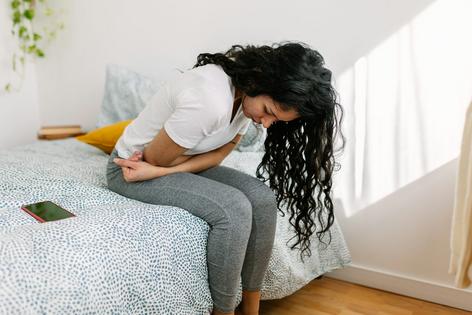Endometriosis pain leads to missed school and work in two-thirds of women with the condition, new study finds
Published in Women
More than two-thirds of women with endometriosis missed school or work due to pain from the condition, in a study of more than 17,000 women between the ages of 15 and 44 in the U.S. That is a key finding of new research published in the Journal of Endometriosis and Uterine Disorders.
Our study also found that Black and Hispanic women were less likely to be diagnosed with endometriosis compared with white women. Interestingly, women who identified as part of the LGBTQ community had a higher likelihood of receiving an endometriosis diagnosis than heterosexual women.
We used data from the National Health and Nutrition Examination Survey, which is administered by the Centers for Disease Control and Prevention, for the period 2011 to 2019. The survey data use adjusted weights to account for the racial composition of U.S. society, meaning our sample of 17,619 women represents 51,981,323 women of the U.S. population.
We specifically examined factors related to quality of life, such as poverty, education and functional impairment, as well as race and sexual orientation.
I am a physician-scientist and a researcher in women’s health, working together with specialists in OB-GYN from Yale and the University of Texas.
Endometriosis is a chronic, often painful condition that affects approximately 10% of reproductive-age women worldwide. It occurs when tissues that would normally line the inner surface of the uterus instead occur outside the uterus, such as on the ovaries or even in distant organs such as the lungs or brain. These abnormally located lesions respond to hormonal changes during the menstrual cycle, causing pain when stimulated by the hormones that regulate the menstrual cycle.
Our study sheds light on how endometriosis, despite its prevalence, remains underdiagnosed and underresearched. We found that 6.4% of reproductive-age women in the U.S. had an endometriosis diagnosis. More than 67% reported missed work or school, or having been unable to perform daily activities, due to pain associated with endometriosis.
Our study highlights disparities in the diagnosis and management of endometriosis among different racial groups. Black women had 63% lower odds of getting an endometriosis diagnosis, and Hispanic women had 55% lower odds compared with non-Hispanic white women. This disparity may reflect historical biases in health care, pointing to the need for more equitable practices.
In addition, our study underscores the importance of considering women’s health across diverse population subgroups, with particular attention to sexual orientation. We found that non-heterosexual lesbian, gay, bisexual, transgender and queer women had 54% higher odds of receiving an endometriosis diagnosis compared with straight women. Our study was the first to examine endometriosis likelihood among non-heterosexual women at the national level in the U.S.
We found no significant association between endometriosis and other quality-of-life indicators such as poverty, education or employment status, which suggests that the condition affects women across various socioeconomic backgrounds.
Our work adds to the growing body of evidence that Black women are less likely to be diagnosed with endometriosis and that their reported pain symptoms are often overlooked.
Explanations for this inequity include health care bias against minority women and limited access to medical care among Black women. Research also shows that many medical professionals as well as medical students and residents believe that Black women have a lower pain threshold compared with the white population.
This is another possible reason that pain symptoms among Black women with endometriosis get neglected. Researchers from the U.K reported the same findings, attributing these disparities to systemic bias and inequitable medical care.
Another study estimates that the lifetime costs associated with having endometriosis are about US$27,855 per year per patient in the U.S., costing the country about $22 billion annually on health care expenditures.
This article is republished from The Conversation, a nonprofit, independent news organization bringing you facts and trustworthy analysis to help you make sense of our complex world. It was written by: Rasha Al-Lami, Yale University
Read more:
Endometriosis afflicts millions of women, but few people feel comfortable talking about it
Menstrual cycle is a vital sign and important indicator of overall health − 2 reproductive health experts explain
The US lacks adequate education around puberty and menstruation for young people – an expert on menstrual health explains
Rasha Al-Lami does not work for, consult, own shares in or receive funding from any company or organization that would benefit from this article, and has disclosed no relevant affiliations beyond their academic appointment.

























Comments